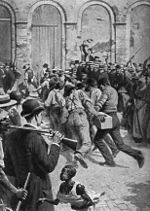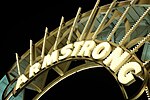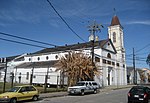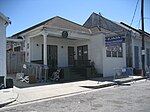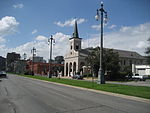13th Ward of New Orleans
New Orleans stubsUse mdy dates from August 2023Wards of New Orleans

The 13th Ward or Thirteenth Ward is a division of the city of New Orleans, Louisiana. It is one of the 17 Wards of New Orleans. The Ward was formerly part of the old Jefferson City annexed by New Orleans in 1870.
Excerpt from the Wikipedia article 13th Ward of New Orleans (License: CC BY-SA 3.0, Authors, Images).13th Ward of New Orleans
Dumaine Street, New Orleans French Quarter
Geographical coordinates (GPS) Address Nearby Places Show on map
Geographical coordinates (GPS)
| Latitude | Longitude |
|---|---|
| N 29.964722 ° | E -90.070556 ° |
Address
Dumaine Street 1515
70116 New Orleans, French Quarter
Louisiana, United States
Open on Google Maps
